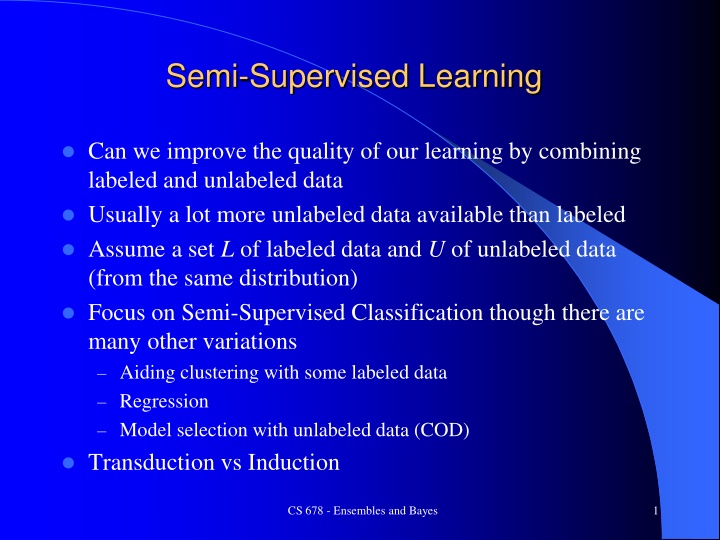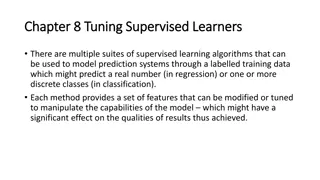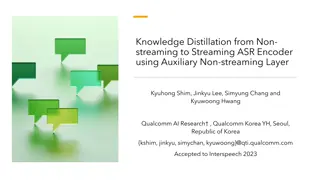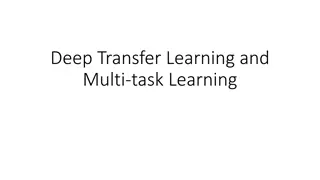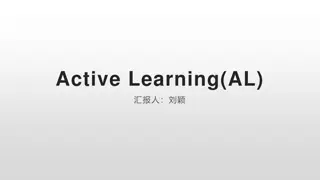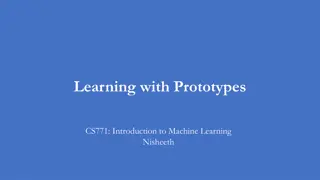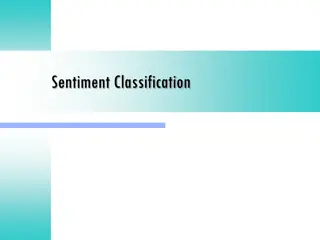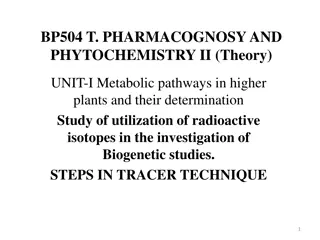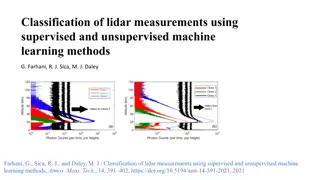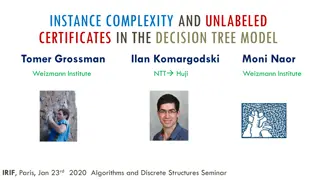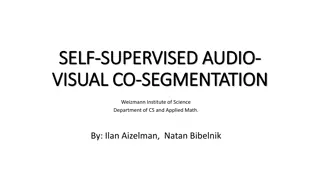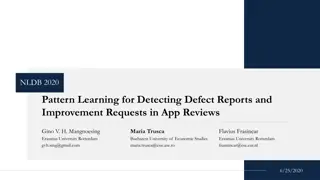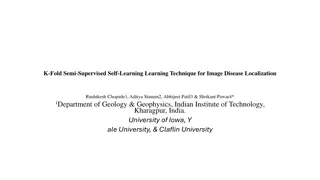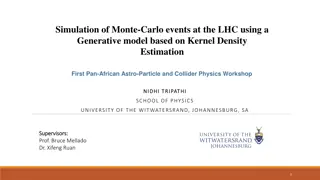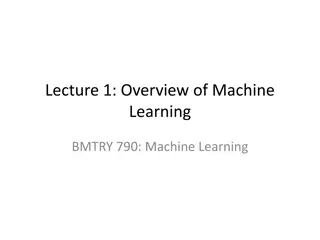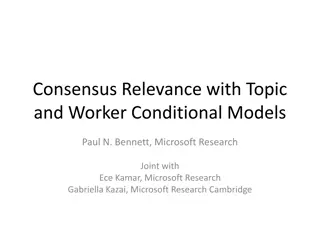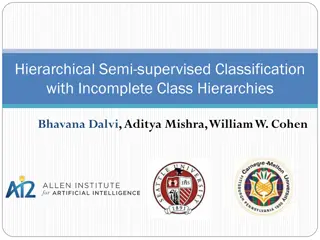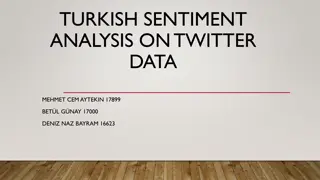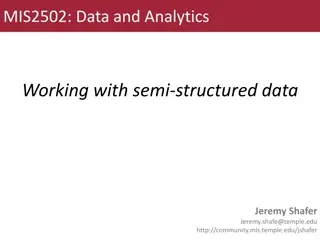Semi-Supervised Learning: Combining Labeled and Unlabeled Data
In semi-supervised learning, we aim to enhance learning quality by leveraging both labeled and unlabeled data, considering the abundance of unlabeled data. This approach, particularly focused on semi-supervised classification, involves making model assumptions such as data clustering, distribution representation, decision boundary placement, and model simplicity. Various techniques like self-training, co-training, and generative models are utilized to improve classification accuracy using a combination of labeled and unlabeled data.
Download Presentation

Please find below an Image/Link to download the presentation.
The content on the website is provided AS IS for your information and personal use only. It may not be sold, licensed, or shared on other websites without obtaining consent from the author.If you encounter any issues during the download, it is possible that the publisher has removed the file from their server.
You are allowed to download the files provided on this website for personal or commercial use, subject to the condition that they are used lawfully. All files are the property of their respective owners.
The content on the website is provided AS IS for your information and personal use only. It may not be sold, licensed, or shared on other websites without obtaining consent from the author.
E N D
Presentation Transcript
Semi-Supervised Learning Can we improve the quality of our learning by combining labeled and unlabeled data Usually a lot more unlabeled data available than labeled Assume a set L of labeled data and U of unlabeled data (from the same distribution) Focus on Semi-Supervised Classification though there are many other variations Aiding clustering with some labeled data Regression Model selection with unlabeled data (COD) Transduction vs Induction CS 678 - Ensembles and Bayes 1
How Semi-Supervised Works Most approaches make strong model assumptions (guesses). If wrong can make things worse. Some commonly used assumptions: Clusters of data are from the same class Data can be represented as a mixture of parameterized distributions Decision boundaries should go through non-dense areas of the data Model should be as simple as possible (Occam) CS 678 - Ensembles and Bayes 2
Unsupervised Learning of Domain Features PCA, SVD NLDR Non-Linear Dimensionality Reduction Many Deep Learning Models Deep Belief Nets Sparse Auto-encoders Self-Taught Learning CS 678 - Ensembles and Bayes 3
Deep Net with Greedy Layer Wise Training Supervised Learning ML Model New Feature Space Unsupervised Learning Original Inputs Adobe Deep Learning and Active Learning 4
Self-Training (Bootstrap) Self-Training Train supervised model on labeled data L Test on unlabeled data U Add the most confidently classified members of U to L Repeat Multi-Model Uses multiple models to label/move instances of U to L Co-Training Train two models with different independent features sets Add most confident instances from U of one model into L of the other (i.e. they teach each other) Repeat Multi-View Learning Train multiple diverse models on L. Those instances in U which most models agree on are placed in L. CS 678 - Ensembles and Bayes 5
Generative Models Generative Assume data can be represented by some mixture of parameterized models (e.g. Gaussian) and use EM to learn parameters (ala Baum-Welch) CS 678 - Ensembles and Bayes 6
Graph Models Graph Models Neighbor nodes assumed to be similar with larger edge weights Force same class member in L to be close, while maintaining smoothness with respect to the graph for U. Add in members of U as neighbors based on some similarity Iteratively label U (breadth first) CS 678 - Ensembles and Bayes 7
TSVM Transductive SVM (TSVM) or Semi-Supervised SVM (S3VM) Maximize margin of both L and U. Decision surface placed in non-dense spaces Assumes classes are "well-separated" Can also try to simultaneously maintain class proportion on both sides similar to labeled proportion CS 678 - Ensembles and Bayes 8
Summary Oracle Learning Becoming a more critical area as more unlabeled data becomes cheaply available CS 678 - Ensembles and Bayes 9
Active Learning Obtaining labeled data can be the most expensive part of a machine learning task Supervised, Unsupervised, and Semi-Supervised Learning In Active Learning can query an oracle (e.g. a human expert, test, etc.) to obtain the label for a specific input In active learning we try to learn the most accurate model while having to query the least amount of data for labels Adobe Deep Learning and Active Learning 10
Active Learning Often query: 1) A low confidence instance (i.e. near a decision boundary) 2) An instance which is in a relatively dense neighborhood Adobe Deep Learning and Active Learning 11
Active Learning Often query: 1) A low confidence instance (i.e. near a decision boundary) 2) An instance which is in a relatively dense neighborhood Adobe Deep Learning and Active Learning 12
Active Learning Often query: 1) A low confidence instance (i.e. near a decision boundary) 2) An instance which is in a relatively dense neighborhood Adobe Deep Learning and Active Learning 13
Active Learning Often query: 1) A low confidence instance (i.e. near a decision boundary) 2) An instance which is in a relatively dense neighborhood Adobe Deep Learning and Active Learning 14
Active Clustering Images (Objects, Words, etc.) First do unsupervised clustering Which points to show an expert in order to get feedback on the clustering to allow adjustment? Adobe Deep Learning and Active Learning 15
Active Clustering Images (Objects, Words, etc.) First do unsupervised clustering Which points to show an expert in order to get feedback on the clustering to allow adjustment? Adobe Deep Learning and Active Learning 16
Active Clustering Images (Objects, Words, etc.) First do unsupervised clustering Which points to show an expert in order to get feedback on the clustering to allow adjustment? Adobe Deep Learning and Active Learning 17
